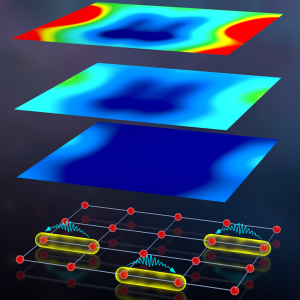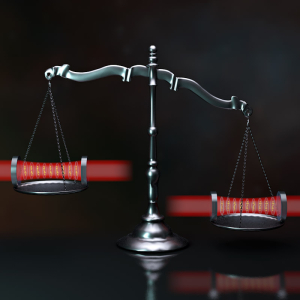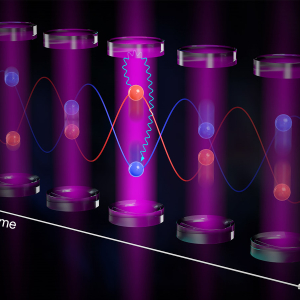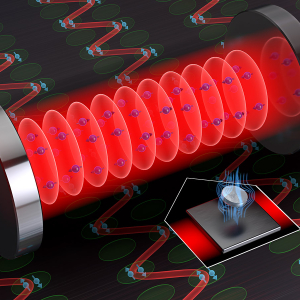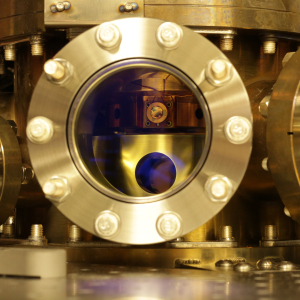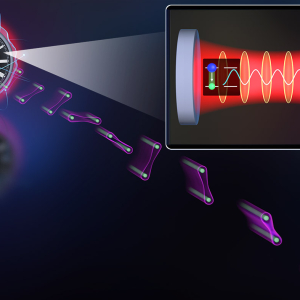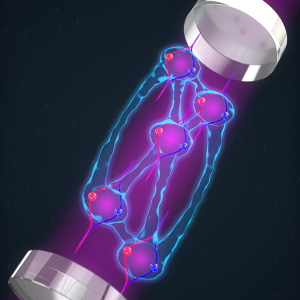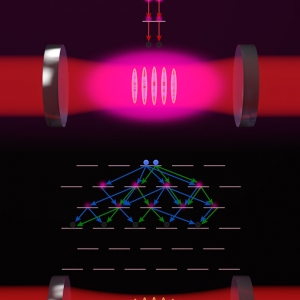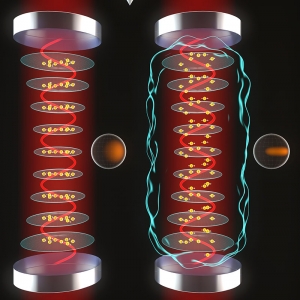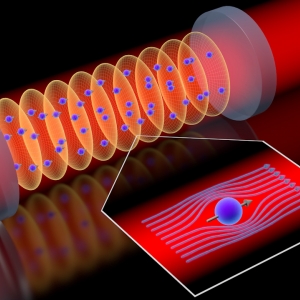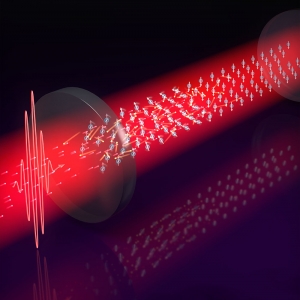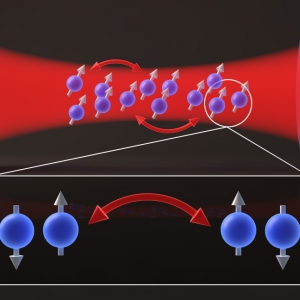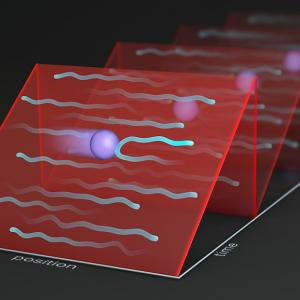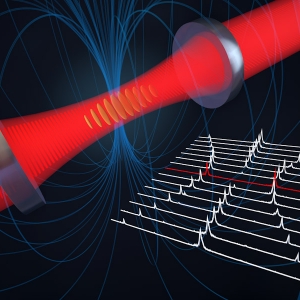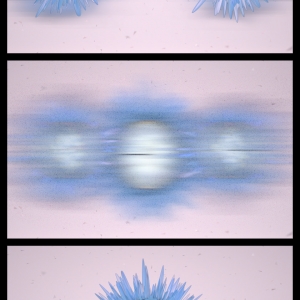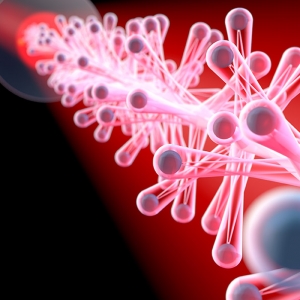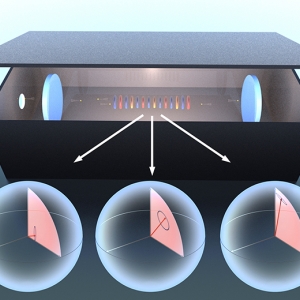Research Highlights
Atomic & Molecular Physics | Laser Physics | Precision Measurement
JILA Collaboration Makes Cavity Quantum Electrodynamics into a Team Sport
Published:
PI: Ana Maria Rey | PI: James Thompson
Atomic & Molecular Physics | Laser Physics | Precision Measurement
A Symphony of Light and Atoms
Published:
PI: James Thompson
Laser Physics | Quantum Information Science & Technology
Smoother Ticking Through Topology
Published:
PI: Ana Maria Rey | PI: James Thompson | PI: Jun Ye
Precision Measurement | Quantum Information Science & Technology
Making a Leap by Using “Another State to Entangle”
Published:
PI: Ana Maria Rey | PI: James Thompson
Precision Measurement | Quantum Information Science & Technology
To Measure or Not to Measure, but Dynamically Evolve—That is the Question
Published:
PI: Ana Maria Rey | PI: James Thompson
Precision Measurement | Quantum Information Science & Technology
Twisting and Binding Matter Waves with Photons in a Cavity
Published:
PI: Ana Maria Rey | PI: James Thompson | PI: Murray Holland
Precision Measurement | Quantum Information Science & Technology
B-C-S—Easy as I, II, III: Unveiling Dynamic Superconductivity
Published:
PI: Ana Maria Rey | PI: James Thompson
Atomic & Molecular Physics | Quantum Information Science & Technology
The Tale of Two Clocks: Advancing the Precision of Timekeeping
Published:
PI: Jun Ye | PI: James Thompson
Precision Measurement | Quantum Information Science & Technology
Entangled Pairs Get Sensitive Very Fast
Published:
PI: Ana Maria Rey | PI: James Thompson
Precision Measurement | Quantum Information Science & Technology
An Entangled Matter-wave Interferometer: Now with Double the Spookiness!
Published:
PI: James Thompson
Atomic & Molecular Physics | Precision Measurement | Quantum Information Science & Technology
Running in a Quantum Corn Maze and Getting Stuck in the Dark
Published:
PI: Ana Maria Rey | PI: James Thompson
Atomic & Molecular Physics | Quantum Information Science & Technology
A Magic Recipe for a Quantum Interferometer
Published:
PI: Ana Maria Rey | PI: James Thompson
Laser Physics | Quantum Information Science & Technology
BCS: Building a Cavity Superconductor
Published:
PI: Ana Maria Rey | PI: James Thompson
Atomic & Molecular Physics
Phases on the Move: A Quantum Game of Catch
Published:
PI: Ana Maria Rey | PI: James Thompson
Atomic & Molecular Physics | Precision Measurement | Quantum Information Science & Technology
Twisting Atoms to Push Quantum Limits
Published:
PI: Ana Maria Rey | PI: James Thompson
Atomic & Molecular Physics
A Little Less Spontaneous
Published:
PI: James Thompson | PI: Murray Holland
Quantum Information Science & Technology
The Quantum Identity Crisis
Published:
PI: James Thompson | PI: Murray Holland







